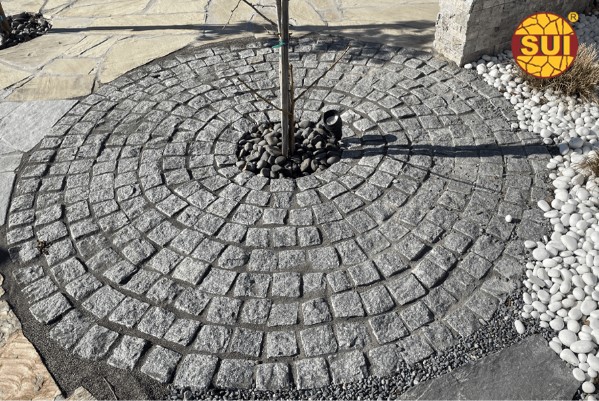Although the outdoor pavement has evolved substantially over time, one of the most preferred surfaces of pathways, and driveways remains cobblestones. Historic cities have been paved with these small, organic shaped stones that have transformed modern environments to produce a singular charm. Whether modern alternatives are in virtual abundance, Cobblestones do stand as a favourite because of the added weight of durability, aesthetics and usefulness, which even other materials find difficult to emulate. When learning more about the reasons why these paving stones of ancient origin remain popular today, homeowners will have an opportunity to fully appreciate the timeless value of such a tested component and make reasonable decisions concerning the design of their outdoor spaces.
-
Unmatched Historical Character and Authentic Charm
Cobblestones immediately relate any outdoor space to colonial American streets and quintessentially European streets, and they bring centuries of history and age to the scene. The naturally occurring size and asymmetrical shapes of individual stones tell the stories of both superior craftsmanship and nature and cannot be recreated in the modern manufactured materials. All cobblestone surfaces develop their own patina, over time, with weathering patterns and subtle color differences adding depth and attractive detail to your paving project. This aging process changes landscapes so that they develop a sense of stability and maturity even in new structured areas.
-
Exceptional Structural Integrity and Load-Bearing Capacity
The special nature of individual stones, as well as the interlocking method of building, which correctly balances the weight on the surface, makes cobblestones extremely strong. Unlike huge paving slabs that can break into pieces even at high loads, it fits in drive ways that require construction equipment, delivery trucks, and big cars without cracking. Large fissures that eventually afflict concrete and asphalt surfaces are avoided by the tiny size of individual stones. Cobblestone surfaces are great investments for high-traffic residential and commercial applications because, when constructed correctly on the right foundation materials, they can sustain commercial traffic loads while retaining their structural integrity for decades.
-
Remarkable Longevity and Generational Value
Cobblestone is one of the strongest pavement materials; numerous installations of this kind have remained in use with minimal maintenance in excess of at least a century. The thick granite stones used as cobblestones are amazingly weathering resistant, chip resistant, and resistant to almost all weather. Natural cobblestones last long to remain adaptable even in years to come, unlike the artificial materials that may become obsolete or may prove difficult to replicate during repair works. Individual stones hardly ever have to be replaced and when they do, the new stones blend perfectly with the existing installations. This long life-span ultimately translates into an excellent value since the initial investment keeps on providing service, long after when other paving materials are forced to be changed out entirely.
-
Distinctive Aesthetic Appeal and Design Versatility
The unique feel and appearance of cobblestone surfaces give aesthetic value to any form of architecture such as the modern urban design to the rustic farmhouse. The three-dimensionality provided by cobblestone installations makes them dense and visually dynamic; thus, cannot be compared to flat paving materials and ends up in surfaces that shift the overall appearance of their visual aesthetic based on the light of that day. These artistic options are given a wider range by a diversity of laying patterns. The color variations particular to stone types provide a subtle joy to landscape due to the lack of dominance of other design elements present.
-
Low Environmental Impact and Sustainable Benefits
Natural cobblestones are a sustainable paving option that reduces environmental impact while offering enduring durability. When compared to manufactured equivalents, these stones require less processing, which lowers production-related energy use and carbon emissions. Cobblestones’ longevity minimizes resource use over time by lowering the frequency of replacement cycles. A really sustainable paving solution may be produced by simply moving and reusing cobblestones after their useful life in one application is over. Because of their inherent makeup, they won’t release dangerous chemicals into groundwater or soil.
-
Enhanced Property Value and Market Desirability
Cobblestone characteristics are frequently acknowledged by experts as high-end features that greatly raise home prices and market attractiveness. Natural stone paving’s perceived elegance and quality draw in potential purchasers and provide lasting first impressions that set houses apart from similar listings. Buyers associate overall property care and upkeep with well-executed cobblestone installations because they show excellent workmanship and attention to detail. Cobblestones’ classic charm guarantees that the investment will hold up over time and retain its value contribution despite shifting design trends. Cobblestone elements are especially used in a lot of upscale residential buildings and luxury developments as selling factors to support premium prices. Cobblestone installations are effective marketing tools for real estate sales because of their unique look and track record of durability.
Conclusion
Cobblestones have retained their positions as a premium paving material due to the excellence of combination of functional utility and aesthetic beauty in these paving materials, which are hard to be replicated by the modern alternatives. Cobblestones Supplier have all the extensive solutions to such demanding outdoor uses due to impressive durability, excellent drainage capacity, exclusive beauty, and sustainability of its eco-friendliness. A lifetime of quality service, reduced maintenance expenses, and increased property values are the advantages of high-quality cobblestone paving investment.




